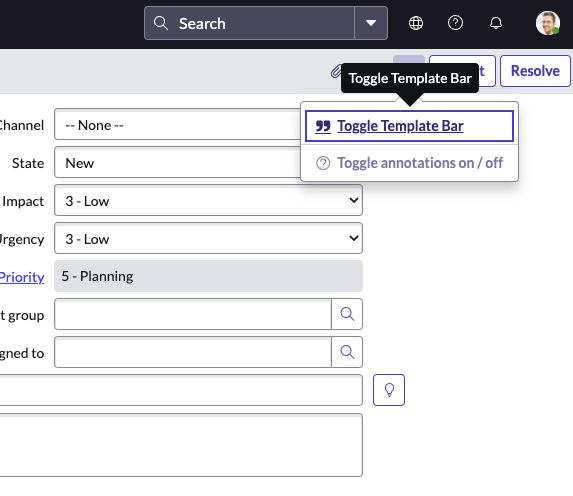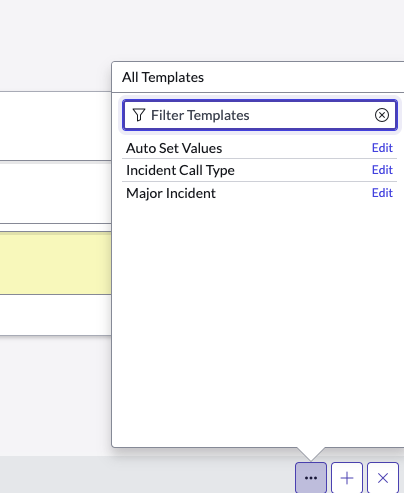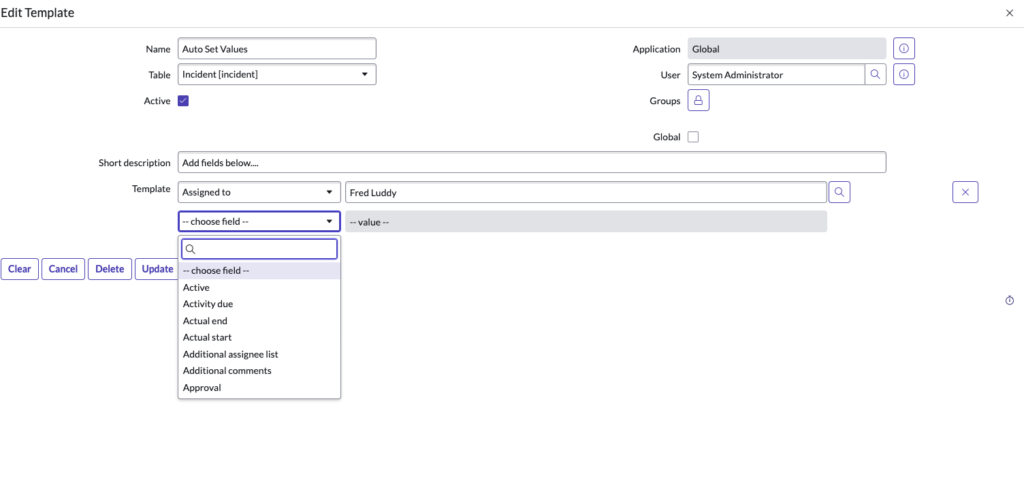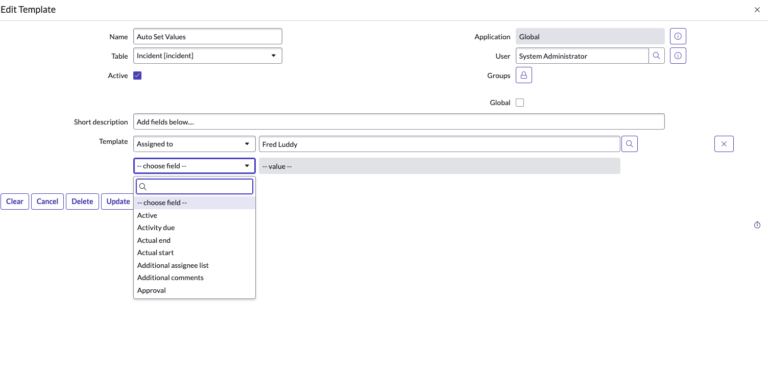What Is A Form Template?
Navigating around ServiceNow is all about trying to save time and minimize clicks.
Do you repeatedly ever fill out the same data on a form, that you wish you could click a button and have it auto populate?
That feature actually exists in ServiceNow, it’s called a form template.
Let’s talk about what it is, and why you’d want to use one.
A form template is a pre-populated list of fields that can be set, once the form template is applied.
Say for example, you have 10 incidents that you want to create, but they only vary slightly, and the other 15 fields are the same each time.
This is a great candidate for creating and using a template. It’s going to save you a lot of time in the long run.

Form templates can be created for a variety of record types in ServiceNow, such as incidents, change requests, or service requests. Once a form template is created, it can be used to create new records or update existing records. This can save time and help ensure consistency in data entry, which is especially important in organizations with large volumes of data and many users.
In summary, a form template is a pre-designed form layout that can be used to standardize the look and feel of data entry in ServiceNow. Users might want to create one to save time and increase consistency in data entry across their organization.
How To Create A Form Template
There are a few different ways you can crete a form template in ServiceNow.
One way you can do this is to go to System Definition > Templates and create a new record here
Alternatively, you can create a form template by going to the form, and then following the below steps.
- Navigate to the Form Designer application in your ServiceNow instance. You can do this by typing “form designer” in the application navigator search bar and clicking on the “Form Designer” option.
- Once in the Form Designer application, click on the “New” button in the top left corner of the screen.
- In the “New Form” screen, give your form template a name and description, and select the type of form you want to create (such as a new record or an update form).
- Drag and drop the fields you want to include in your form template from the “Field Type” pane on the left side of the screen onto the form canvas in the center of the screen. You can customize each field’s label, type, and options by clicking on it.
- When you have finished designing your form template, click on the “Save” button in the top right corner of the screen.
- Your form template is now ready to be used. To use it, simply navigate to the record type you created the form for, click on the “Create New” or “Update” button, and select your form template from the “Templates” dropdown menu.
How To Use A Form Template
When you get to the form, you first need to toggle the template bar to “On”.

Then you will have a gray bar at the bottom of the form.

Once you have the Template bar toggled to “On”, you’ll see the below templates.
As soon as you click one of these templates, the fields that you have set on that template will apply to. this form in ServiceNow.
You can even modify the template here:

If you want to update a template, just go in and click Edit Template.

Why Use A Template?
We like number one below the best, but you let us know if there are other benefits.
There are several benefits to using a template in ServiceNow:
- Saves Time: Using a pre-designed template saves time because you don’t have to start from scratch each time you create a new record or update an existing one. This is especially useful if you work with multiple record types, as you can create a template for each type and reuse them as needed.
- Consistency: Using a template helps ensure consistency in data entry, because the fields and their order are pre-defined. This can help prevent data entry errors and inconsistencies, which can be time-consuming to correct.
- Standardization: Templates can be designed to standardize the data entered into a record. This is important for compliance and reporting purposes, because it ensures that all records contain the same information in the same format.
- Ease of Use: Templates are designed to be user-friendly, which makes it easier for users to enter and update data. This can be especially helpful for new or occasional users who may not be familiar with all the fields and options available in ServiceNow.
- Flexibility: Templates can be customized to fit the specific needs of your organization. For example, you can add or remove fields, change the order of fields, or specify which fields are required.
In summary, using a template in ServiceNow saves time, ensures consistency, standardizes data entry, makes it easier for users to enter and update data, and is flexible enough to be customized to fit your organization’s needs.
Have any other tips or tricks for templates?
Drop them below.

